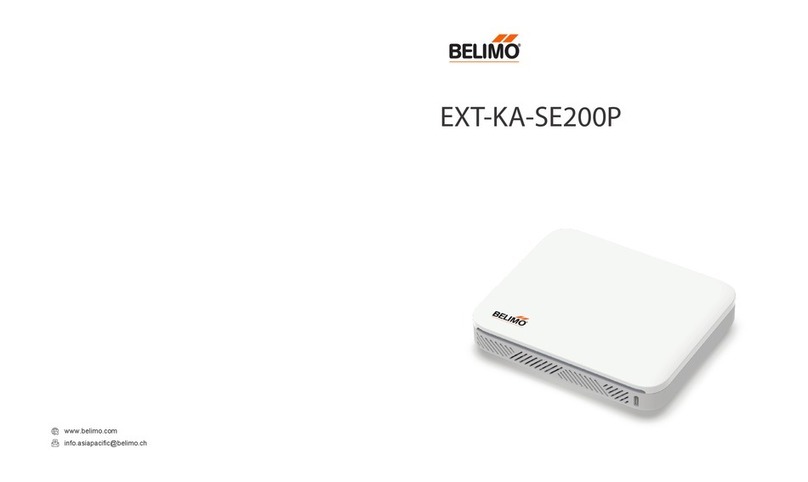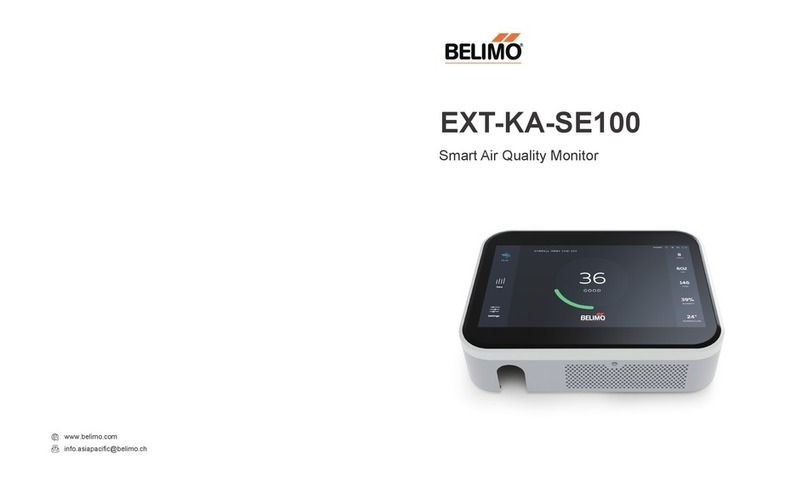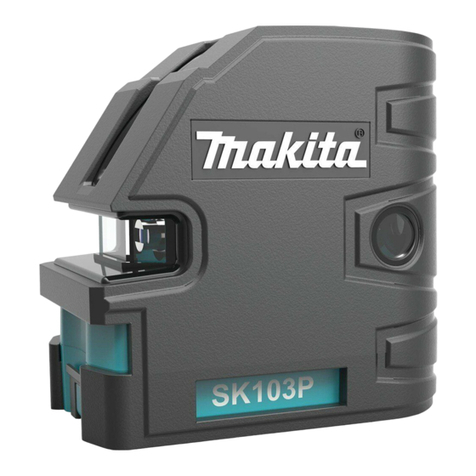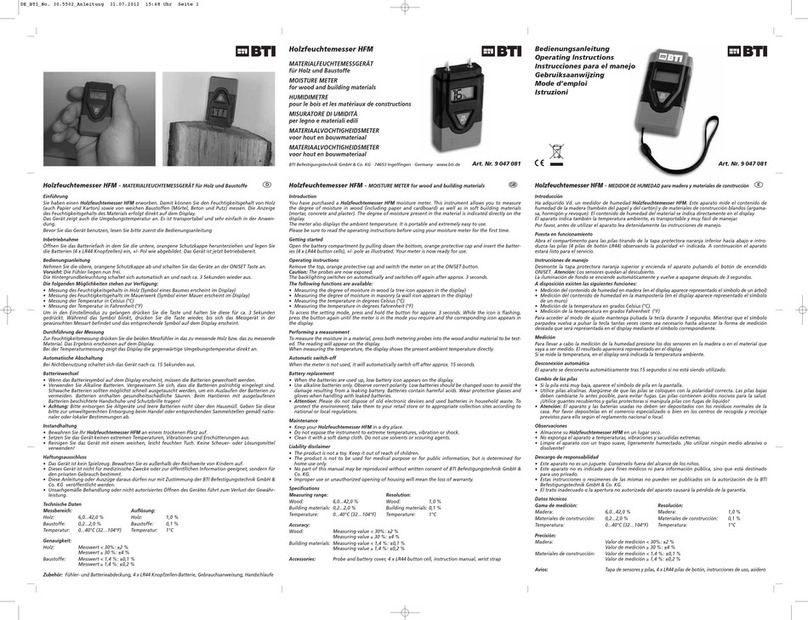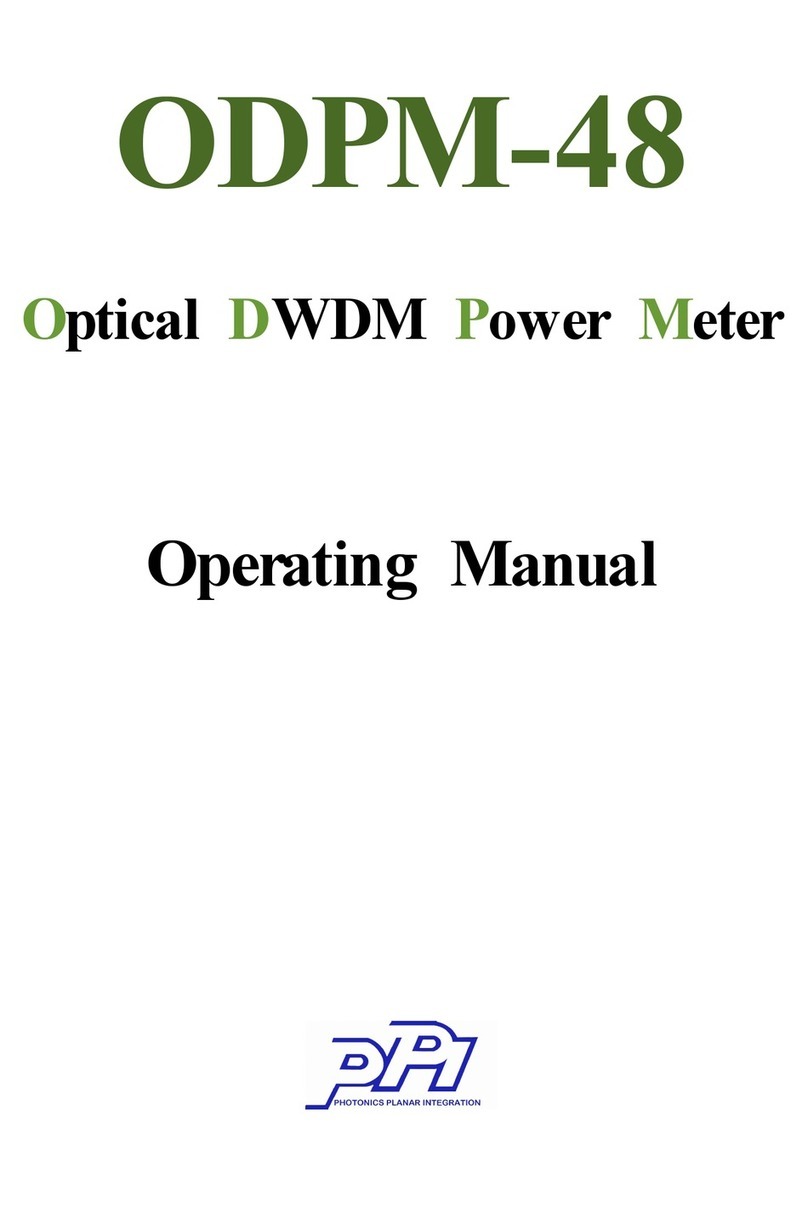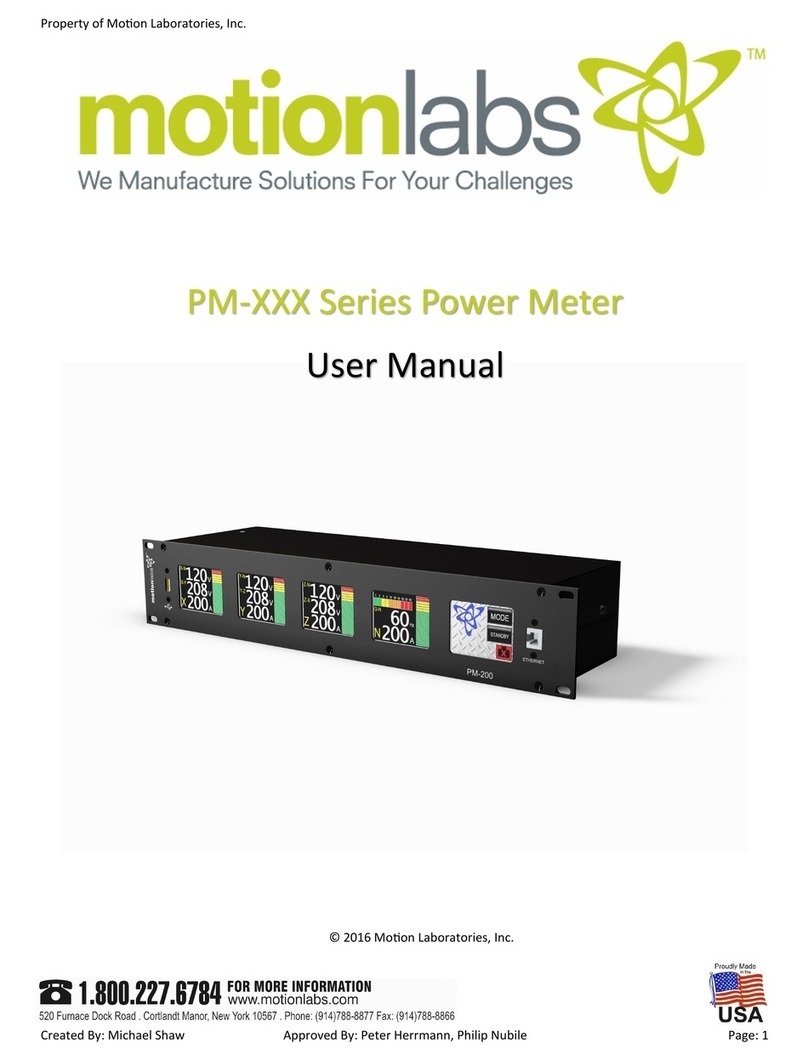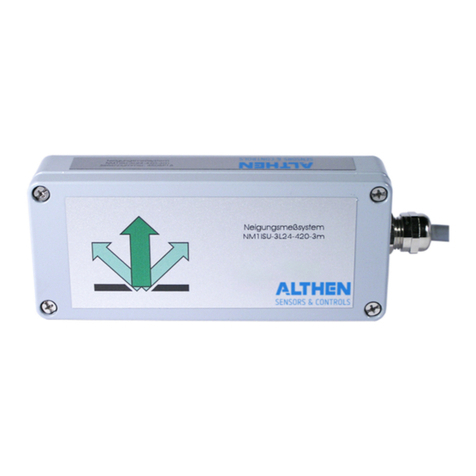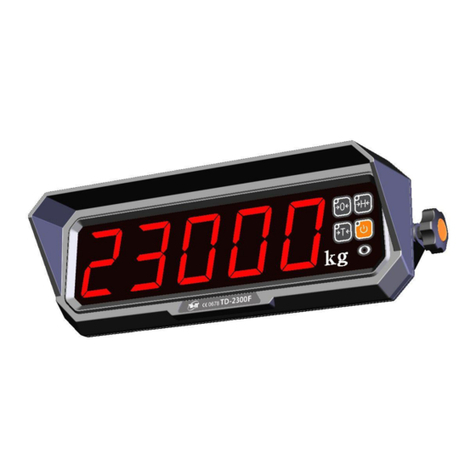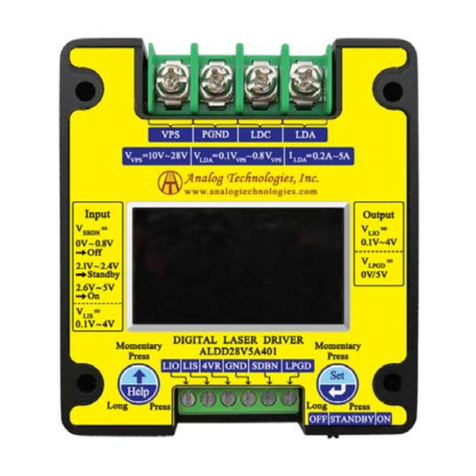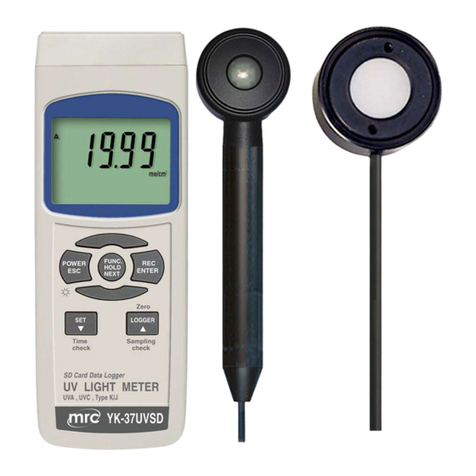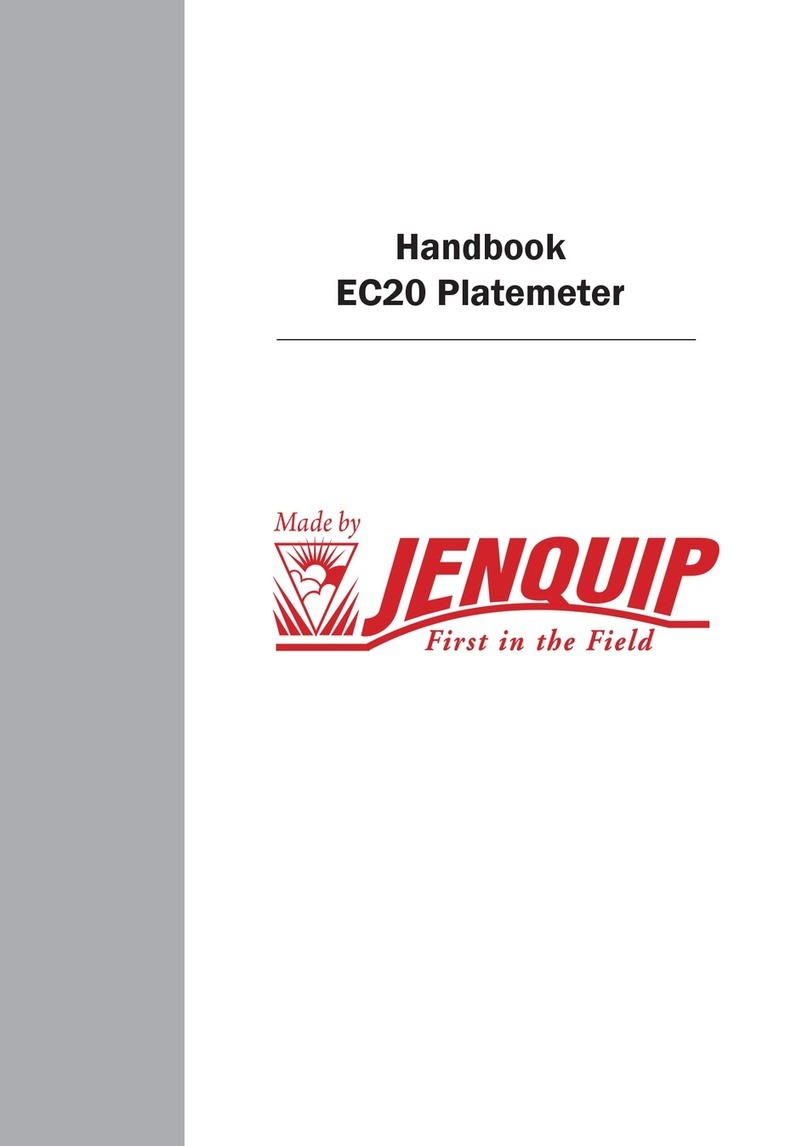Belimo 22G14-5C User manual

Version 6.3
Digital Gas Monitoring
Operation Manual

TABLE OF CONTENTS
1.0 General Description
1.1 Applications
1.2 Features
1.3 Specications
1.4 User Interface
2.0 Model Selection Guide
3.0 Installation
3.1 Monitor Placement
3.2 Wiring
3.3 Installation on round column
3.4 Warm-up delay
3.5 Installation Check List
4.0 Operation
4.1 Screen Display
4.2 Default Settings
4.3 Changing Settings
4.4 List of Settings
4.5 Sequence of Operation
5.0 Network Conguration
5.1 Using CAN Network, Central
Communication module
5.2 Using CAN Network No Central
Communication module
5.3 Defaults Conguration
5.4 Creating Zones or Groups
5.5 Addresses
5.6 Output Relays
6.0 Maintenance Guide
6.1 Calibration Procedure
6.2 Calibration Procedure for Electro-
chemical and Catalytic sensors
6.3 Calibration Procedure for Refrigerant
and VOC
6.4 Sensor Replacement
6.5 Fault Monitoring
7.0 BACnet Network Conguration

Gas Monitor/Communication module
Important Information !
This manual provides information required to install, operate and
maintain the Belimo gas monitoring system. Read and study before
attempting to install or operate monitors. Installation and operation
not in accordance with this manual can result in a hazardous
situation or harm. Relay connections may be used to control 120
Vac equipment. Ensure power is disconnected from relays before
attempting to service this unit.
1.0 General Description
Belimo gas monitors provide air quality monitoring for commercial
properties. Close monitoring of indoor air-born pollutants and
automatic fresh air controls improve the health and well being of
occupants and, also minimize excess ventilation, reducing both
energy costs and maintenance costs. The key to maintaining this
balance is a high level of precision coupled with a robust design
suited to tough commercial applications.
Each monitor can measure one or two gases and control ventilation
directly. They communicate with each other (up to 32) via the chain
network, so some monitors activate the ventilation and others send
the commands. The monitors are easily assigned to groups on site
for ventilation zoning on the same network. This reduces control
wiring signicantly.
The use of this peer-to-peer CAN network eliminates the need for a
costly Communication module on smaller projects. For the larger
ones, a C-22G-5x Communication module or addressable relay
units can be added where starters are centralized in the mechanical
room. The monitors can also be tied into a BACnet building
automation system by simply connecting an MS/TP cable to any
monitor or Communication module on the CAN network. The gas
readings from all the monitors will display on the BMS and the BMS
can over-ride output relays on the monitor it is connected to.
Warning: DO NOT PAINT THE MONITOR

Digital gas monitoring
1.1 Applications:
• Vehicle emissions in indoor parking garages
• Municipal maintenance facilities
• Bus terminals
• Automobile dealerships
• Hospital parking for ambulances and visitors
• Volatile organic vapor control from soil contamination
• Refrigerant Gas Leak Monitoring
• CO2 demand control ventilation for meeting rooms
• Warehouse ventilation Control
1.2 Features:
• Stand-alone operation with adjustable alarm relays,
indicators and strobe
• BACnet Laboratory (BTL) listed Smart Sensor
• BACnet MS/TP RS485 interface
• CAN network client-server operation or central control via
C-22G-5x Communication module.
• Pre-calibrated plug-and-play sensor modules avoid the
need to recalibrate when upgrading expired sensors.
• Impact resistant, water resistant enclosure, with top wire
entry and drip proof wire guide.
• Binary input for conrmation of external action (fan on or
damper open)
1.3 Specications
• Supply 24 V AC/DC, 50/60 Hz, 0.21 A, 5 VA, 5 W
• Relays (1 or 2) SPDT, 5A @ 125 Vac, non-inductive
On delay; 2-999 seconds (16 minutes)
Off delay; 0-999 seconds (16 minutes)
• Operating temperature -20 ºC to 40 ºC (-4 ºF to 104 ºF)
• For indoor use
• Flame resistant Polycarbonate ABS enclosure rated
UL94 5VA
• Certied by CSA according to C22.2. No. 61010-1

1.0 General Description
• 22G02-5A, 22G02-5B, 22G02-5C, 22G0214-5A, 22G0214-5B,
22G0214-5C, 22G14-5A, 22G14-5B, 22G14-5C: Certied
according to UL 2075 and ULC-S588
• Analog 4-20 mA or 2-10V (variant dependent)
• Pollution degree 2
• Installation catagory II
• Altitude 2000 m (6560 ft)*
• Humidity 15 to 90% RH continuous, non-condensing
1.4 User Interface:
• Back lit LCD display shows gas concentration, user
settings, calibration controls
• Red LED alarm indicators, gas level 1 and 2
• High intensity white LED strobe on level 3
• Audible alarm
• 4 pushbutton user keypad
• Password control for settings
* Calibration verication is recommended above 610 m (2000 ft)

Digital gas monitoring
22Gxx-5A
1 relays
2 analogue outputs
2.0 Model Selection Guide
Sensor Replacement
Modules
Complete Unit
22Gxx-5B
2 relays
no analogue
22Gxx-5C
No relays
No analogue outputs
R-Gxx
Gas Type
See List
22Gxxyy-5A
22Gxxyy-5B
22Gxxyy-5C
Gas
Type
Slot 1
Optional
Gas
Type
Slot 2
C-22G-5A
• 1 relays
• 2 analogue
outputs
C-22G-5B
• 2 relais
• BACnet MS/TP
• Réseau CAN
C-22G-5C
• Réseau CAN
Communication module Only

2.0 Model Selection Guide
Gas Type Range
NH3Ammonia 04 0-250 ppm
Ar Argon (O2depletion) 23 0-50% O2
CO2Carbon Dioxide (air quality) 15-xx3 0-2000 ppm
CO2Carbon Dioxide (compressed) 15-xx5 0-5000 ppm
CO2Carbon Dioxide 15-xx6 0-10000 ppm
CO Carbon Monoxide 02-00L 0-100 ppm
CO Carbon Monoxide 02 0-250 ppm
CO nil H2Carbon Monoxide nil H2 effect 03 0-250 ppm
CL2Chlorine 17 0-10 ppm
He Helium (O2depletion) 23 0-50% O2
H2O in air Humidity (relative) 25 0-100% RH
H2Hydrogen 08 0-50% LEL
H2S Hydrogen Sulde 16 0-50 ppm
CH4Methane 05 0-50% LEL
N2Nitrogen (oxygen depletion) 23 0-50% O2
NO2Nitrogen Dioxide 14 0-10 ppm
VOCs Organic Vapors 01 0-1000 ppm
O2Oxygen Leak 22 0-50% O2
O2Oxygen Depletion 23 0-50% O2
C3H8Propane 06 0-50 % LEL
HCFC HCFC Refrigerants 13 Variable
HFC HFC Refrigerants 20 Variable
HFO HFO Refrigerants 30 Variable
Refrigerants IR Broadband Refrigerants 21 Variable

Digital gas monitoring
3.0 Installation
3.1 Monitor Placement
Coverage
Guidelines for placement of diffusion type monitors are based on
the reasonable delay for gas to get from the source to the sensor.
All monitor sensors combinations are created equal in this regard.
• For air quality control of exhaust emissions and
accumulations of toxic gases the generally acceptable
maximum radius of coverage is 50 feet (15 meters).
Approximately 7500 square feet (700 square meters).
• For leak detection of combustible gases, ammonia,
refrigeration gases the maximum radius is 30 feet (10 meters).
The radius of coverage of any monitor does not extend beyond
any obstruction that impedes natural circulation of air. This
includes walls, stairs, elevators, shelving with solid ll, tool
chests, etc. The sensor must “see” the area of coverage; if not,
additional monitors are required.
Mounting heights for gas monitors are based on density relative
to air.
1. Lighter than air: Hydrogen (H), Methane (natural gas,
CH4), Ammonia (NH3):
Install 1 to 3 feet (0.3 to 1 meters) from ceiling.
2. Similar to air (mixing evenly with air): Carbon monoxide
(CO), Nitrogen dioxide (NO), Oxygen (O), Carbon
dioxide (CO):
Install from 3 feet (1 meter) from the oor to half of
the ceiling height. For vehicle emissions (CO + NO),
install at 3 to 7 feet (1 to 2 meters) from the oor
(Recommended: 1.5 meters / 5 feet for CO). When
diesel exhaust is above the vehicle (example for
heavy equipment), install NOmonitors at ~50% of
the ceiling height and above the vehicle height.

In all cases the monitors must be installed above
obstructions and allow circulation of air to the monitors;
example, maintenance garages in automobile dealerships
where tool chests, work tables and storage racks typically
line all walls.
3. Heavier than air: HFCs, HCFCs, Propane (C3H8),
Chlorine (CL), Hydrogen sulde (HS), most organic
vapors (consult Belimo):
Install 1 to 2 feet (0.3 to 0.6 meters) from oor.
For all types of monitors avoid drafts, obstacles, aerosols,
silicones. Place sensors in the center of its coverage area as
much as possible.
3.2 Wiring connection
Use 18-20 AWG for power.
Use 24 AWG twisted pair, low cap, shielded, comms cable for
BACnet and CAN bus connection.
3.0 Installation

Digital gas monitoring
3.2.1 Wiring Model 22Gxx-5A & C-22G-5A
Relay 1
NO COM NC
AC
Supply
Analog Output
AN1 G AN2
To magnetic starter coil or control
relay coil for ventilation
Transformer
24 V AC/DC
5 VA/W for
each unit
Independent circuit
120 VAC
To other
units
Binary
input
to limit
switch
BACnet
MSTP
network
-
+
Shield
(no connect)
CAN bus
network
High (H)
Low (L)
Shield
(on 1st unit only)
To other
units
1 Dry contact
relay
Up postion 4...20 mA
or Down position 2...10 V
End of line jumper
CAN bus
Down = off
Up for rst and last
unit on chain
End of line
jumper BACnet
Down = off
Up for rst and
last unit on chain

3.2.2 Wiring Model 22Gxx-5B & C-22G-5B
3.2 Wiring
Relay 1
NO COM NC
AC
Supply To magnetic starter coil or control
relay coil for ventilation
Transformer
24 V AC/DC
5 VA/W for
each unit
Independent circuit
120 VAC
To other
units
Binary
input
to limit
switch
BACnet
MSTP
network
-
+
Shield
(no connect)
CAN bus
network
High (H)
Low (L)
Shield
(on 1st unit only)
To other
units
Relay 2
NO COM NC
2 Dry contact
relays
End of line jumper
CAN bus
Down = off
Up for rst and last
unit on chain
End of line jumper
BACnet
Down = off
Up for rst and
last unit on chain

Digital gas monitoring
3.2.3 Wiring Model 22Gxx-5C & C-22G-5C
Network end of
line jumper
Transformer
24 V AC/DC
3 VA/W for
each unit
Independent circuit
120 VAC
To other
units CAN bus
network
High (H)
Low (L)
Shield
(on 1st
unit only)

3.3 Installation on round column
To install monitor on round column, use yellow feet provided with
monitor for stability. They are not required if installed on at wall.
3.4 Warm-up delay
Most sensors needs warm-up delay to stabilize sensor reading.
See table below:
Gas type Warm-up time
01, 05, 06, 08, 13, 20, 30 24 hours
02, 03, 04, 14, 16, 17, 22, 23 5 min
15-xxx 10 min
21 1 hour

Digital gas monitoring
3.5 Installation Check List
Important. All wiring must conform to local building codes,
regulations and laws. If the equipment is used in a manner not
specied by the manufacturer, the protection provided by the
equipment may be impaired.
1. Use ½ inch EMT conduit for all wiring.
2. A switch or circuit breaker must be included in the installation. It
must be suitably located and easily reached in a secure location
and identied as the disconnect for the “Gas Monotoring System”.
3. Install enclosed 120/24 Vac transformer. For the size of transformer
allow 5 VA for each sensor or Communication module. Use 18 to
20 AWG two conductor wire. Do not tie the secondary to ground.
Connect multiple monitors to one transformer. Ensure that the
polarity of the AC connections is the same at each monitor or
Communication module, otherwise communication will not function.
4. Connect relay contacts (usually relay 1) to ventilation system.
Use a magnetic starter so that the sensor contacts energize the
starter coil and not the fan motor directly.
5. For multiple monitors, inter-connected using the CAN network.
Connect a shielded twisted pair cable 24 AWG from screw “L”
and “H” on one sensor, to the next monitor and continue chain
to the last sensor. Maintain the same polarity on each unit. Do
not use star, T, or H junctions, only a continuous chain. Make
all chain connections at the sensors. Connect shield to “S” on
the rst sensor or Communication module only and join shields
together at each sensor/Communication module after the rst.
6. Move the end-of-line jumper to the on position (UP) on the rst
monitor (or Communication module) on the chain and the last
monitor/Communication module on the chain. A Communication
module with no sensor module can be located anywhere on the
chain. Ensure its EOL jumper is off (down) if it is in the middle.
Monitor/Communication module addresses can be in any location
on the chain.
7. Power on the units. They will display the gas type and reading.

To verify if monitors are communicating correctly, change setting
no. 56 on one unit. Press →until you reach option 56. Press
↑to switch from 0 to 1, to turn on the network display. Press
↑and ←simultaneously to save, then press and hold ←for a
few seconds to return home. The unit will display each monitor
connected in order of their address. If the unit does not display
the others scrolling by, check the following;
• each unit must have a unique address, setting 39, with no
duplicates
• end-of-line jumpers are set on units at ends of cable only
• polarity of the communication cable and the 24 Vac is the
same on all units
• verify wire connections for shorts, and loose wires, etc.
8. To further test communication, press and hold the up button on
a monitor for 5 seconds to start manual mode (5 minutes). This
will close the relay 1 on that unit and all of the other units on the
network. See section 5 to set up a conguration for multiple
zones.
3.3 Installation
Electrical
Distribution
Panel
Magnetic
Starter
Exhaust Fan
Dampers
Fan Power
Source
Power source
for controls
to other
H
S
L
5
6
4
3
2
1
1
Transformer
24 V AC/DC
Monitors

Digital gas monitoring
4.0 OPERATION
4.1 Screen Display
The LCD shows the type of gas and the current gas
concentration. If two sensor modules are installed, the display
will alternate between them.
1indicates alarm 1 on, per settings 0, 1, 2 or if activated by
another sensor on the CAN network via setting 36. This is
usually the low gas level alarm.
2indicates alarm 2 on. Per settings 3, 4, 5 or if activated by
another monitor on CAN network per setting 37.
3indicates alarm 3 on. Per settings 6, 7, 8 or if activated
by another monitor on CAN network per setting 38. Alarm 3
activates the sounder and strobe.
Mindicates manual override mode on. Useful to start ventilation
system without the risk of leaving it on too long in cold weather.
From the home screen, press and hold ↑for 5 seconds to start.
Then click again to increase time from 5 to 60 minutes. This
activates alarm 1 (or 2, and 3 per setting 69) and sends alarm
transmit messages (settings 9-17) to other monitor on the CAN
Address
(See setting 56)
Alarm status
Type of gas
Concentration

network. The unit will return to automatic operation after the
time runs down. To cancel manual mode press ↓several times to
reduce time left to run. It will take a few seconds to stop. “M”
also displays when auto-cycle is on. See setting 73.
Tindicates alarm 1 on due to high ambient temperature (setting
51). Useful for summer ventilation.
4.2 Default Settings
User settings are factory pre-loaded with default values to
facilitate set up and can be changed at any time. Upgrading
rmware will not affect user settings.
Alarm thresholds should be set to suit local regulations.
Default values for these are general guidelines only.
Note: Hold left and down arrows at the same time to display
rmware version.
4.3 Changing Settings
Press →and ←to move through the settings. If the keypad lock
is on then enter the password rst. The screen will display the
setting number 0, 1, 2, etc. plus the short description (e.g.; AL1
for Alarm 1 and the current setting.)
Press the↑or ↓buttons to increase or decrease the setting.
To save, press ↑and ← buttons at the same time. The word
“OK” will appear. If you do not see “OK” and the new value it is
because the buttons were not pressed simultaneously. Try again.
4.0 Operation
Type of gas
Concentration

Digital gas monitoring
No. Name Description Range Default
0 AL1 Alarm 1 threshold, activates relay 1 by sensor
1 A1Del Alarm 1 Delay on (seconds) 2-999 30
2 A1Off Alarm 1 Delay off (seconds) 0-999 20
3 AL2 Alarm 2 threshold, activates relay 2 by sensor
4 AL2Del Alarm 2 Delay on (seconds) 2-999 30
5 AL2Off Alarm 2 Delay off (seconds) 0-999 20
6 AL3 Alarm 3 threshold, sounder by sensor
7 A3Del Alarm 3 Delay on (seconds) 2-999 180
8 A3Off Alarm 3 Delay off (seconds) 0-999 20
9 A1Tx Alarm 1 transmit message, CAN
network 0-255 1
10 A1Tx Alarm 1 transmit message, CAN
network 0-255
11 A1Tx Alarm 1 transmit message, CAN
network 0-255
12 A2Tx Alarm 2 transmit message, CAN
network 0-255 2
13 A2Tx Alarm 2 transmit message, CAN
network 0-255
14 A2Tx Alarm 2 transmit message, CAN
network 0-255
15 A3Tx Alarm 3 transmit message, CAN
network 0-255 3
16 A3Tx Alarm 3 transmit message, CAN
network 0-255
17 A3Tx Alarm 3 transmit message, CAN
network 0-255
4.4 List of Settings Sensor A
(upper socket) settings
For UL installation, alarm shall not exceed 200 ppm for CO

No. Name Description Range Default
18 AL1-B Alarm 1 threshold, activates
relay 1 by sensor
19 A1Del Alarm 1 Delay on (seconds) 2-999 30
20 A1Off Alarm 1 Delay off (seconds) 0-999 20
21 AL2-B Alarm 2 threshold, activates
relay 2 by sensor
22 A2Del Alarm 2 Delay on (seconds) 2-999 30
23 A2Off Alarm 2 Delay off (seconds) 0-999 20
24 AL3-B Alarm 3 threshold, sounder and
strobe by sensor
25 A3Del Alarm 3 Delay on (seconds) 2-999 180
26 A3Off Alarm 3 Delay off (seconds) 0-999 20
27 A1Tx Alarm 1 transmit message,
CAN network 0-255 1
28 A1Tx Alarm 1 transmit message,
CAN network 0-255
29 A1Tx Alarm 1 transmit message,
CAN network 0-255
30 A2Tx Alarm 2 transmit message,
CAN network 0-255 2
31 A2Tx Alarm 2 transmit message,
CAN network 0-255
32 BiTx Binary input transmit message
when limit switch is closed,
CAN bus. See 3.2.1
0-255 0
33 A3Tx Alarm 3 transmit message,
CAN network 0-255 3
34 A3Tx Alarm 3 transmit message,
CAN network 0-255
35 A3Tx Alarm 3 transmit message,
CAN network 0-255 0
4.4 List of Settings Sensor B
(lower socket) settings
4.4 List of Settings

Digital gas monitoring
No. Name Description Range Default
36 R1Rx Receive message to activate relay 1,
CAN network
0-255 1
37 R2Rx Receive message to activate relay 2,
CAN network
0-255 2
38 R3Rx Receive message to activate sounder
and strobe CAN network
0-255 0
39 Adr Monitor identication address, CAN
network
0-31 0
40 AnZA Accessing this option forces analogue
output A to low for testing with meter
only and no external cables attached.
Use up and down arrows to adjust
lowest setting (2v or 4 ma) and save
41 AnSA Accessing this option forces analogue
output A to high for testing with meter
only and no external cables attached.
Use up and down arrows to adjust
highest setting (10v or 20 ma)
42 AnZB As option 40 but for output B
43 AnSB As option 41 but for output B
44 Temp Temperature display enable off/on 0/1 0
45 Aud Local audio alarm enable on alarm 3 0/1 1
46 BAC BACnet MSTP mode select
0 = BACnet communication disabled
1 = BACnet communication enabled
2 = BACnet communication enabled
and display all sensors on CAN
network
0/1/2 0
47 BMA BACnet MAC address 127 1
48 BBR BACnet baud rate
0 = 9600
1 = 19200
2 = 38400
3 = 76800
0/1/2/3 3
49 KBL Keyboard lock, blocks access to
options
0/1 0
4.4 List of Settings Continued
General settings
This manual suits for next models
9
Table of contents
Other Belimo Measuring Instrument manuals
Popular Measuring Instrument manuals by other brands
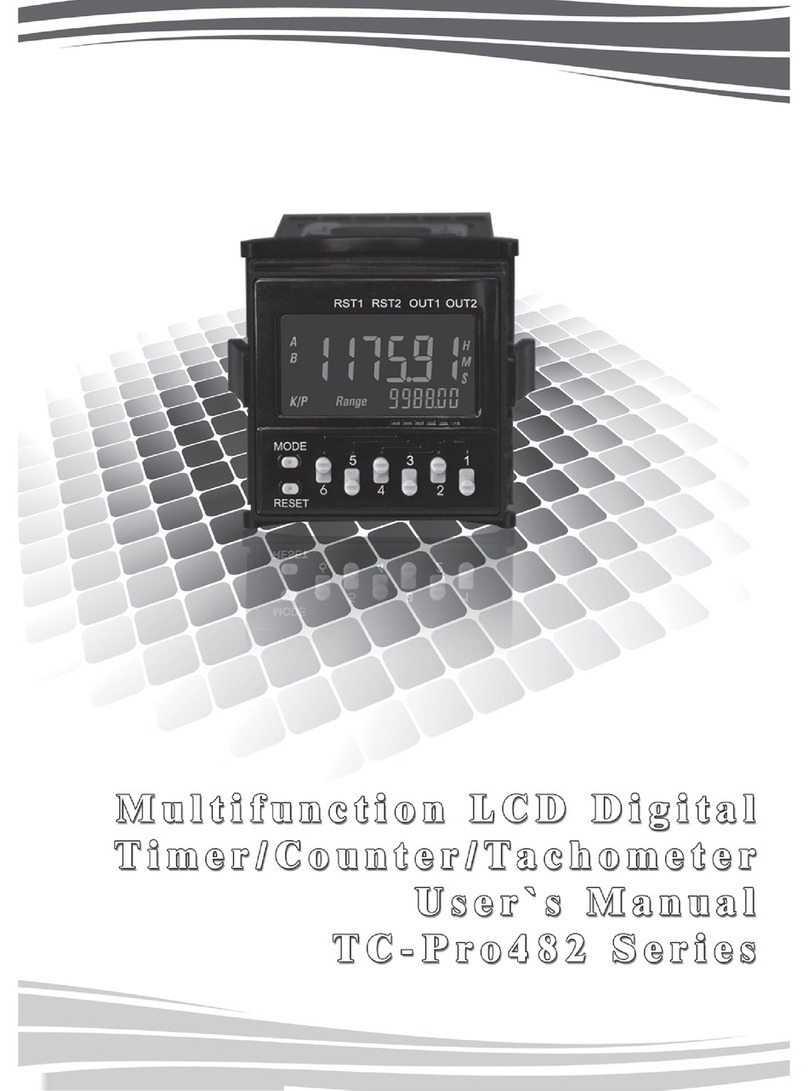
Array electronic
Array electronic TC-Pro482SRA user manual

Kurt J. Lesker
Kurt J. Lesker Vacuum Mart KJLC 354 Series Troubleshooting
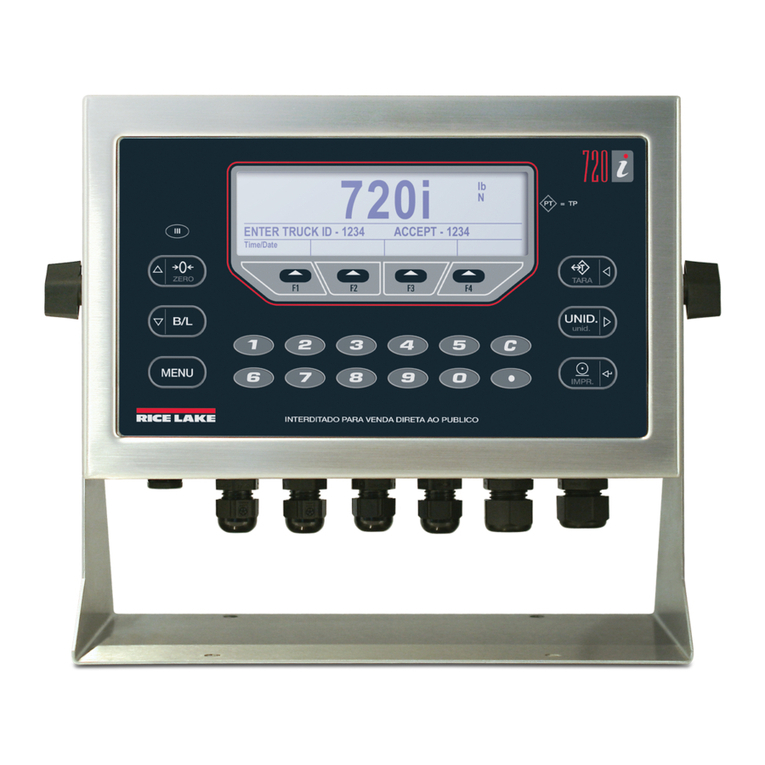
Rice Lake
Rice Lake 720i Technical manual
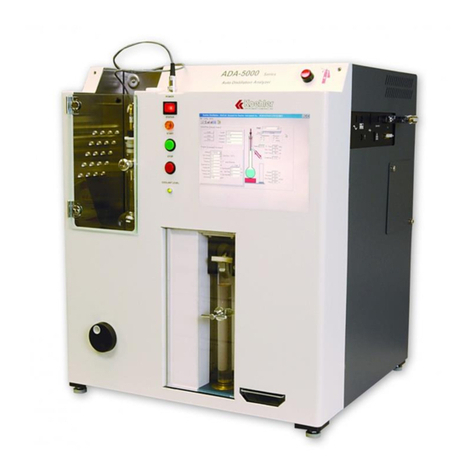
Koehler
Koehler ADA5000 Operation and instruction manual

Fathom
Fathom QiQuac M5 operating manual

PCE Health and Fitness
PCE Health and Fitness CMM 5 user manual
